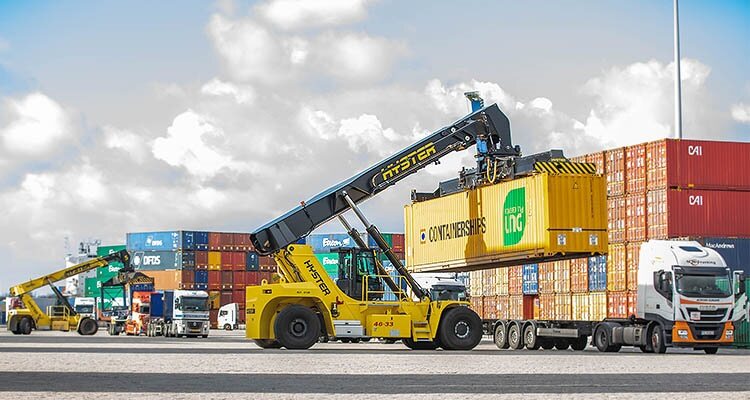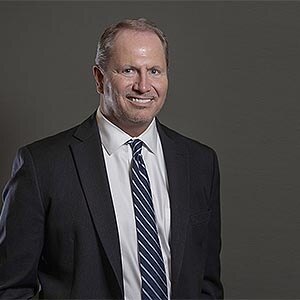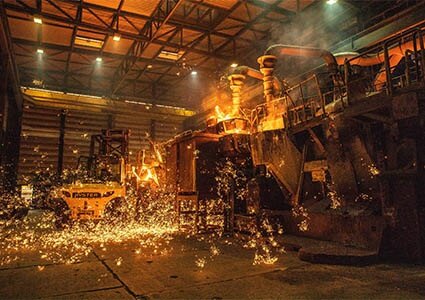
How Hyster-Yale Group is transforming supply chain challenges into opportunities for improvement
As an industry leader, Hyster-Yale Group (Hyster-Yale) designs, engineers, manufactures, sells, and services a comprehensive range of lift trucks and aftermarket parts under the Hyster® and Yale® brands. With over 90 years of experience, Hyster-Yale is well-equipped to meet the specific materials handling needs of customers’ applications.

The business boasts a strong global presence encompassing manufacturing facilities, product development centers, and sales services. Specifically, its regional product development centers span five continents, with locations in the US, China, Italy, the Netherlands, the UK, India, and Japan.
Originally two separate entities, the company’s history has been marked by several innovations under the Hyster and Yale brands that have helped propel the industry forward. Yale was responsible for introducing the industry’s first battery-powered, low-lift platform truck, for instance, as well as the first fluid coupling transmission, and the first hypoid drive axle. Hyster, on the other hand, launched a revolutionary product, Monotrol, a pedal for speed and direction control that was patented in 1959 and is still in production today.
Innovative technology
The brands’ spirit of innovation is certainly still present today, with Hyster-Yale working to bring improved products to market using innovative technologies like electric counterbalance trucks and hydrogen fuel cell technology. Tracy Hixson, Vice President of Global Supply Chain at Hyster-Yale, joins us to discuss the company’s evolution and continued success, as well as how it has navigated the complex challenges of the last few years.
“Yale goes back a particularly long way, when it was founded as a lock design and manufacturing company by Linus Yale in the 1840s,” Tracy opens. “It specialized in expensive, handmade bank locks but diversified to add materials handling equipment to its portfolio, becoming the largest employer in the Stamford, Connecticut area.
“Hyster, on the other hand, is a company based on the West Coast working predominantly within the logging industry. Originating as a manufacturer of winches and lifting machines for the timber industry, its name comes from a logging term, as legend has it that loggers would call out ‘hoist er’ before lifting a load. It launched its first forklift trucks in 1934, gradually gaining a reputation for its durable machines.
Brand propositions
“The two brands came together under family ownership, transforming into a two-brand forklift company that was later made public,” he narrates. “Since then, we’ve been transforming the way the World moves materials from Port to Home under multiple Forklift Brands. We also have subsidiaries like Bolzoni, a leading worldwide producer of attachments, forks, and lift tables marketed under the Bolzoni®, Auramo, and Meyer® names, and Nuvera Fuel Cells, an alternative-power technology company focused on fuel cell stacks and engines.”
Supply chain resilience
Tracy is quick to dive into the challenges facing supply chains across the globe over the last few years, from Covid-19 and the global pandemic to unprecedented inflation and shortages. “The last few years have been very disruptive, particularly to the supply chain,” he states. “Once Covid hit, we faced several shortages across Tier 1, 2, and 3 parts and components, which required major changes to our previously smooth-running supply chain. We went from being a strategic organization that focused on product development through to engineering, to a reactive one that survived on a day-to-day basis.
“We started working with our core suppliers, who are more like our partners, to prime our supply chain and ultimately, to ensure we have parts when and where we need them. There are so many interconnected factors that impact supply. Firstly, you need to know or predict the demand, then order the parts, but it’s crucial to receive all the parts. It’s not good enough to have all but two or three parts – you still can’t build a product – which in turn drives difficulties for suppliers and results in unwanted working capital throughout the supply chain.
“We’ve worked hard to work through these issues with suppliers to smooth out the outcome of this process. Communication is key to ensuring our relationship with suppliers, including what they need from us, what parts we need from them, and when we need them, so we’re starting to work through these issues in a systematic way.”
As nearshoring continues to dominate current supply chain conversations around the globe, Tracy explains that Hyster-Yale is no exception. “We’re still working through some of these challenges today, as we experienced unprecedented times with our suppliers,” he says. “It forced us to look at the supply chain in an entirely different way; we used to single source with some suppliers from a single region of the world, so we had to consider how to enhance the security of our supply chain across the globe to be resilient in tough circumstances while offering customers greater flexibility, with shorter lead times and better responsiveness.
“Part of ensuring the stability of our supply chain is finding more than one source or region, so that if one region struggles, we can call upon another option to source the parts. We’re developing multiple relationships to ensure we have an inventory of subcomponents versus finished parts, like a years’ worth of microprocessors, for instance. However, we must also negotiate agreements to not only maintain those stock levels, but also have more than one component validated and verified for use.
“The other element is building an ecosystem within the supply chain, or in other words, thinking about the geographic location of our plants and manufacturing facilities. This would enable us to efficiently transition to a one piece flow environment.
Overcoming challenges
“At the end of the day, we’re a complex company that services a huge range of customer demands, which creates thousands of part numbers and thus, a complex supply chain,” he summarizes. “We recognize that to manage this, we need to bring it closer to our plant to give us greater control over the entire process and we’re currently putting the building blocks in place to do so. The ups and downs of the marketplace don’t seem to be slowing down, so we must be prepared to overcome potential challenges in the future.”
supply chain,” he summarizes. “We recognize that to manage this, we need to bring it closer to our plant to give us greater control over the entire process and we’re currently putting the building blocks in place to do so. The ups and downs of the marketplace don’t seem to be slowing down, so we must be prepared to overcome potential challenges in the future.”
Turning to current challenges, Tracy explains: “Nationwide labor shortages are impacting several industries in numerous markets, including us. From local plants to our suppliers, skilled labor is currently very hard to come by, with certain tasks more stretched than others, like welding, for example. One of the ways in which we’re tackling this is by duplicating our supply base in different regions to ensure we have strong working relationships in various areas of the world.
“Another way we’re navigating labor shortages is by utilizing robotics. We’re seeing less people wanting to work in manufacturing environments, and robotics can help us to make these areas more attractive to employees.”
While these are shorter term solutions, Tracy also highlights that Hyster-Yale is working on long term solutions to attract new talent. “We utilize college internships in some keys functions of our business like in product development where we train interns in technical engineering,” he details.
“We’re also developing our own internal training programs to upskill our existing employees in areas like welding and painting. In Kentucky, where one of our plants is located, we’re working alongside the local government to support a technical school in the area. We’re raising its profile with the aim of expanding awareness to a larger footprint, part of which is cooperating with schools to get students interested in engineering or technical training from an early age.”
Data driven
Technology and analytics are also crucial aspects that Hyster-Yale is considering when it comes to the supply chain. “We’re working through analytics in our system to understand where our complexities lie,” Tracy explains. “When you have millions of parts like we do, you must use analytics to manage them and to understand where your economies of scale lie. In a way, you’ve got to be able to peel back the layers of the onion to better understand the data and identify business opportunities.”
Despite the company’s evolution and changes of ownership, its rich heritage and longevity has created a culture that resembles that of a family, rather than a corporation. “I’ve been at Hyster-Yale for 16 years, and I’d describe our culture as one of a public company with a private company culture; we’re a public company, but we’re very family orientated from our chairman and CEO through to the board and every individual,” Tracy reflects. “While we’re a large company with a professional environment and over 8000 employees, I would categorize Hyster-Yale as one global team, as we work well together as one and connect often.
Continuous improvement
“The first step to creating this kind of culture is to set the example to be followed. We promote open communication, for instance, with lots of face-to-face meetings or one-on-one interactions with my teams across the globe. The crucial part is connectivity; we use first names across the business and try our best to show that everyone in the company is valued and brings a unique contribution to the team.”
As our conversation draws to a close, we ask Tracy his thoughts and goals for the company moving forward. “Resiliency, first and foremost,” he replies without hesitation. “We’re going from a push organization to a pull one that can sequence our plants in the right manner to build a strong supply chain and withstand any changes in the marketplace.
“As a business, we’re committed to continuously improving our service and product offering, but personally, I want to build a robust supply chain that smooths out our complexities,” Tracy concludes. “Ultimately, we want to be able to better satisfy our customers with various options while also effectively managing our risk.”